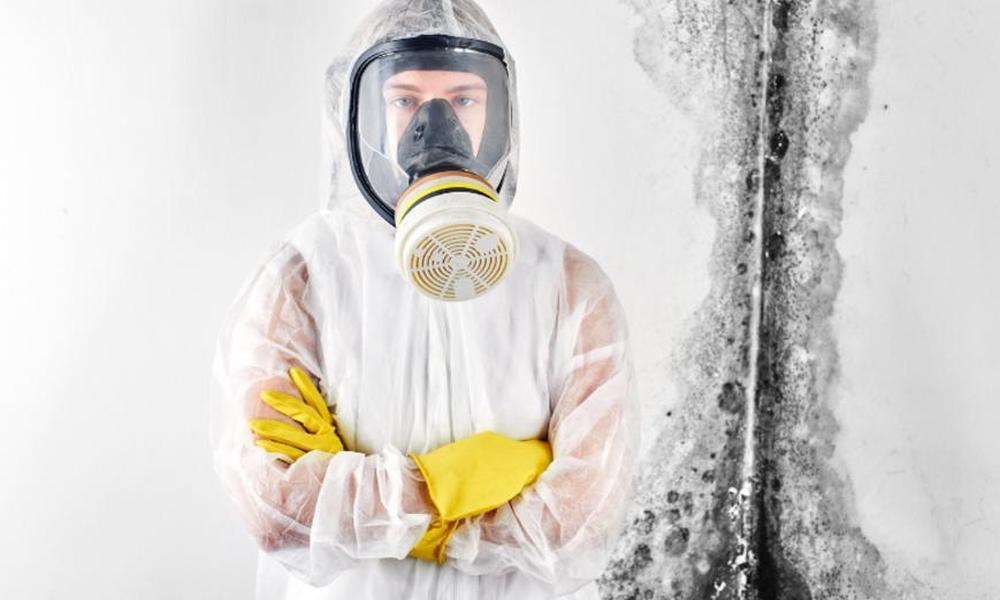Mould growth is a common issue in many homes and buildings, and it poses significant health risks if not handled properly. When tackling mould removal, ensuring your safety is paramount. Personal Protective Equipment (PPE) plays a crucial role in safeguarding you from exposure to mould spores and potentially harmful chemicals during the remediation process. In this blog post, we will take a comprehensive look at PPE for mould removal and the necessary precautions to stay safe while handling this task.
Understanding the Dangers of Mold Exposure
Before delving into PPE, it’s essential to understand the dangers of mould exposure. Mould spores can trigger various health issues, especially for individuals with allergies, respiratory conditions, or weakened immune systems. Inhaling or coming into contact with mould spores can cause respiratory problems, skin irritation, eye irritation, and other health concerns. Proper PPE is critical to preventing direct contact with mould and minimising the risk of health complications.
The Core Components of PPE for Mold Removal
PPE for mould removal comprises several essential components that provide comprehensive protection. These include:
N95 Respirator Masks: N95 respirator masks are designed to filter out at least 95% of airborne particles, including mould spores. They create a seal around your mouth and nose, preventing you from inhaling mould spores while allowing for comfortable breathing during the remediation process.
Safety Goggles: Safety goggles or eye protection are crucial to shield your eyes from mould spores, dust, and debris that may be dislodged during removal. Proper eye protection helps prevent irritation and potential eye infections.
Disposable Gloves: Disposable gloves, such as nitrile or latex gloves, protect your hands from direct contact with mould and cleaning agents. They should be worn during the entire mould removal process and disposed of properly after use.
Protective Clothing: Coveralls or other protective clothing help prevent mould spores from coming into contact with your skin and clothing. This reduces the risk of skin irritation and contamination.
Shoe Covers: Shoe covers are recommended to prevent tracking mould spores to other areas of your home or building. They should be worn over your shoes and discarded after each use.
Choosing the Right PPE
When selecting PPE for mold removal, it’s essential to choose high-quality, properly fitting equipment. Ill-fitting PPE can compromise your safety by allowing mould spores to enter or come into contact with your skin. Ensure that the N95 respirator mask creates a tight seal and that safety goggles fit snugly around your eyes. Likewise, gloves, coveralls, and shoe covers should be the correct size to provide adequate protection.
Preparing for Mold Removal
Before beginning the mould removal process, it’s essential to prepare the area and yourself for the task:
Isolate the Area: Seal off the affected area to prevent mould spores from spreading to other parts of the building. Use plastic sheeting and duct tape to create a containment barrier.
Turn Off HVAC Systems: Shut down heating, ventilation, and air conditioning (HVAC) systems to prevent the spread of mould spores through the air ducts.
Inform Residents or Occupants: If you are working in a commercial building or rental property, inform the occupants about the mould remediation process and the need to vacate the area during removal.
Ventilate the Area: Improve ventilation in the area by opening windows and using fans to reduce humidity and aid in drying out the space after mould removal.
Performing Mold Removal Safely
During the mould removal process, follow these safety guidelines to minimise exposure and ensure effective remediation:
Wet the Mold: Before disturbing the mould, lightly mist it with water to reduce the release of mould spores into the air.
Avoid Agitation: Avoid actions that could agitate the mould and cause the spores to become airborne. Instead, gently remove the mould using appropriate cleaning agents and tools.
Double-Bag Disposal: Double-bag mouldy materials and debris in heavy-duty trash bags before disposing of them. This helps contain mould spores and prevents further contamination.
Clean PPE Properly: After completing mould removal, remove PPE carefully and dispose of disposable items properly. Clean and disinfect reusable PPE before storing it for future use.
Post-Remediation Clean-up
Once mould removal is complete, thorough clean-up is crucial to remove any residual mould spores and prevent regrowth. Use a HEPA vacuum cleaner to clean surfaces and the surrounding area. Additionally, damp-wipe all surfaces with a mould-specific cleaner to further reduce the risk of mould recurrence.
Wrapping Up:
PPE for mould removal is a vital component in ensuring your safety during the remediation process. From N95 respirator masks to safety goggles, disposable gloves, protective clothing, and shoe covers, each piece of PPE plays a crucial role in minimising exposure to mould spores and harmful substances. Properly prepare the area, select the right PPE, and follow safety guidelines during mould removal to stay safe and protect your health while successfully eliminating mould from your home or building.

